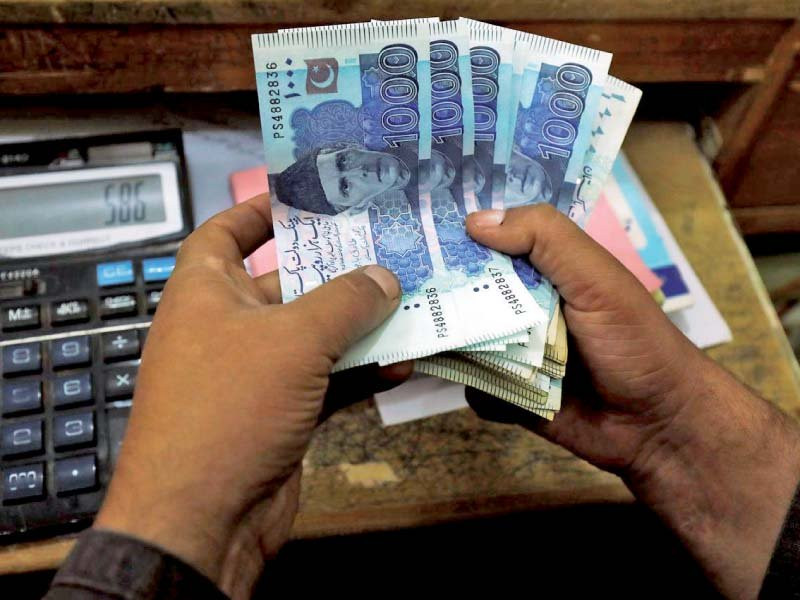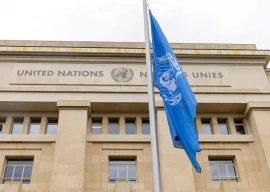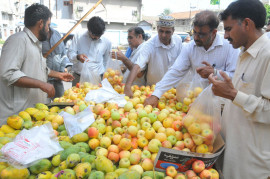
The year 2021 is closing at double-digit inflation because of the skyrocketing increase in the prices of petroleum products and essential commodities in the country.
The Consumer Price Index (CPI) shows a continuous uptrend starting from 5% in January 2021 to touching a 20-month high of 11.5% in November 2021.
The figures indicate the high prices of petroleum products, massive rupee depreciation, persistent increase in the rates of agriculture commodities, and above all the ad-hoc economic policies of the ruling PTI are among the main contributing factors behind this economic mess.
The data shows that the year 2021 started with a 5% year-on-year (YoY) inflation in January, jumped to 8% in February, 9% in March, 11% in April, 10% in May, 9% in June, 8% in July and August, 9% in September and October and the highest ever 11% was recorded in November.
Also read: People squeezed by inflation face more pain from tax hikes
It also shows that on a month-on-month (MoM) basis, inflation soared by the highest 3% as a result of significant changes in four indices -- food, energy, transport and housing.
The Wholesale Price Index (WPI), which monitors prices in the wholesale markets across the country, also witnessed a sharp increase of 27% in November this year.
It was hovering around 5% in the same month a year ago.
The Sensitive Price Index (SPI), which assesses prices of 51 essential commodities from 50 major markets in 17 cities of the country, also indicates an average increase of 19.43% on a YoY basis.
The latest SPI report highlights that the outgoing year opened at 7.68% YoY in January.
Following the rupee depreciation and increase in prices of petroleum products, it jumped to 11.95% in February, 18.70% in March, 21.34% in April, 19.72% in May, 17.58% in June, 16.17% in July, 15.92% in August, 16.63% in September, 15.25% in October and 18.09% in November.
Also read: Over 90pc Pakistanis believe inflation highest during PTI govt: survey
The urban inflation number highlighted that the highest 58.29% increase was witnessed in vegetable ghee rates during the outgoing year, followed by mustard oil at 56.96%, cooking oil 53.59%, masoor pulse 22.38%, fruits 21.67%, meat 20.2%, wheat flour 19.04%, gram whole 14.69%, beans 12.77%, milk 11.71%, vegetables 10.97%, butter 10.83% and wheat 10.26%.
It showed a 37.68% decline in the price of onions, 27.03% moong pulse and 17.66% potatoes.
In non-food group, urban inflation statistics showed 80.34% increase in liquefied hydrocarbons, 47.87% electricity charges, 40.81% motor fuel, 21.17% cleaning and laundering, 16.20% footwear, 14.41% washing soap and detergents, 14.41% match box, 13.99% motor vehicle accessories, 12.42% household equipment and 11.76% increase in drugs and medicines.
Similar is the situation of rural inflation statistics during the period under review.
The government has set the average inflation target for the fiscal year 2021-22 within the range of 7-9%.
However, considering the current situation, economists believe that it is impossible to achieve the target.
They say inflation is likely to exceed the set target by the end of this current fiscal year.


1725443747-0/Untitled-design-(5)1725443747-0-165x106.webp)











1731669127-0/diddy-(44)1731669127-0-270x192.webp)




1731647129-0/Untitled-design-(56)1731647129-0-270x192.webp)






COMMENTS
Comments are moderated and generally will be posted if they are on-topic and not abusive.
For more information, please see our Comments FAQ